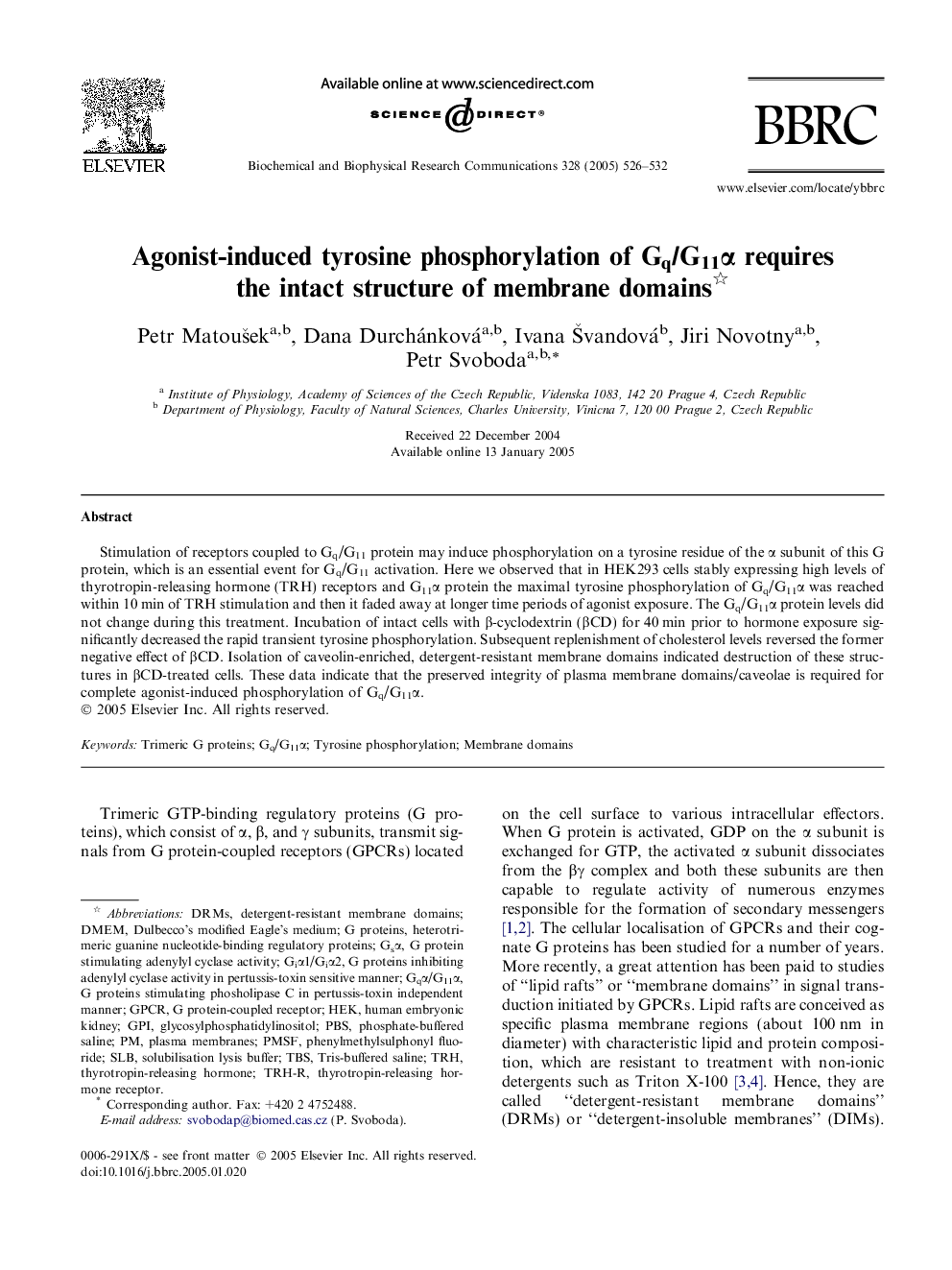| Article ID | Journal | Published Year | Pages | File Type |
|---|---|---|---|---|
| 10771173 | Biochemical and Biophysical Research Communications | 2005 | 7 Pages |
Abstract
Stimulation of receptors coupled to Gq/G11 protein may induce phosphorylation on a tyrosine residue of the α subunit of this G protein, which is an essential event for Gq/G11 activation. Here we observed that in HEK293 cells stably expressing high levels of thyrotropin-releasing hormone (TRH) receptors and G11α protein the maximal tyrosine phosphorylation of Gq/G11α was reached within 10 min of TRH stimulation and then it faded away at longer time periods of agonist exposure. The Gq/G11α protein levels did not change during this treatment. Incubation of intact cells with β-cyclodextrin (βCD) for 40 min prior to hormone exposure significantly decreased the rapid transient tyrosine phosphorylation. Subsequent replenishment of cholesterol levels reversed the former negative effect of βCD. Isolation of caveolin-enriched, detergent-resistant membrane domains indicated destruction of these structures in βCD-treated cells. These data indicate that the preserved integrity of plasma membrane domains/caveolae is required for complete agonist-induced phosphorylation of Gq/G11α.
Related Topics
Life Sciences
Biochemistry, Genetics and Molecular Biology
Biochemistry
Authors
Petr MatouÅ¡ek, Dana Durchánková, Ivana Å vandová, Jiri Novotny, Petr Svoboda,
